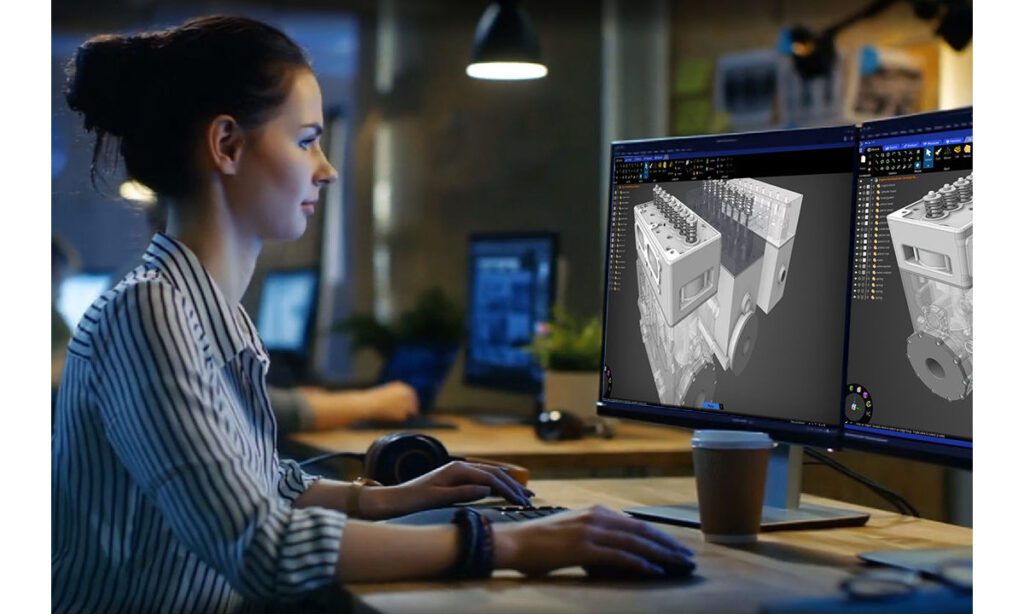This article discusses the role of 3D modeling tools in game development, including their advantages such as speed, flexibility, accuracy, and creativity. The 3D modeling workflow in game development involves several stages: concept design, modeling, texturing, animation, integration, and testing/QA. The most popular 3D modeling tools in game development include Autodesk Maya, 3ds Max, Blender, and ZBrush. The use of 3D modeling tools enables game developers to create detailed, realistic, and immersive game worlds that engage players and create memorable gaming experiences.
The Role of 3D Modeling Tools in Game Development
Introduction
Game development is a complex process that requires a lot of expertise, creativity and hard work. The use of 3D modeling tools has revolutionized game development, making it easier and faster to create high-quality games. This article will discuss the role of 3D modeling tools in game development.
What are 3D Modeling Tools?
3D modeling tools are software applications that allow game developers to create and manipulate 3D objects, characters, environments, and other assets that are used in games. These tools enable developers to create detailed, realistic and immersive worlds that are essential for modern gaming experiences.
The Advantages of 3D Modeling Tools
There are several advantages of using 3D modeling tools in game development:
- Speed: 3D modeling tools allow developers to work quickly and efficiently. They can create and modify objects and environments in real-time, which speeds up the development process and reduces the time it takes to create a game.
- Flexibility: 3D modeling tools are very flexible and can be used to create a wide range of objects, characters, and environments. They can be used to create anything from simple shapes to complex characters and environments with intricate details.
- Accuracy: 3D modeling tools make it easy to create accurate and precise objects and environments. This is important in game development because even the smallest errors can affect the gameplay experience.
- Creativity: 3D modeling tools allow developers to unleash their creativity. They can create unique and imaginative game worlds that engage players and create memorable gaming experiences.
The 3D Modeling Workflow in Game Development
The 3D modeling workflow involves several stages that are used to create the assets that are used in games:
- Concept Design: In this stage, game developers create sketches and illustrations of the game’s characters, environments, and other assets. This helps to set the style and tone of the game and provides a starting point for the 3D modeling process.
- Modeling: Once the concepts are approved, game developers use 3D modeling tools to create the assets that will be used in the game. They create 3D models of characters, environments, props, and other assets using various modeling techniques.
- Texturing: In this stage, textures are applied to the 3D models to give them a realistic look and feel. Texture maps are created using image editing software and applied to the models in 3D modeling tools.
- Animation: Once the models are textured, game developers use 3D animation tools to create animations for the characters and objects in the game. They use techniques such as keyframe animation, motion capture, and procedural animation to create lifelike movements.
- Integration: In this stage, the assets are integrated into the game engine, where they are used to create the game world. The assets are optimized to ensure that they run smoothly on the player’s hardware.
- Testing and QA: Once the game is created, it goes through rigorous testing and quality assurance to ensure that it is free of bugs and runs smoothly on all platforms.
The Most Popular 3D Modeling Tools in Game Development
There are several 3D modeling tools that are commonly used in game development:
- Autodesk Maya: Maya is a powerful 3D modeling and animation tool that is widely used in game development. It is known for its flexibility and advanced features, such as its procedural animation system and its ability to handle large, complex scenes.
- 3ds Max: 3ds Max is another popular 3D modeling and animation tool that is commonly used in game development. It is known for its ease of use and its ability to handle large scenes.
- Blender: Blender is a free, open-source 3D modeling and animation tool that is popular with indie game developers. It is known for its flexibility and its ability to handle complex scenes.
- ZBrush: ZBrush is a digital sculpting tool that is commonly used in character modeling for games. It is known for its ability to create high-quality, detailed character models using a combination of sculpting and painting techniques.
Conclusion
3D modeling tools have revolutionized game development, making it easier and faster to create high-quality games. These tools allow game developers to create detailed, realistic, and immersive game worlds that engage players and create memorable gaming experiences. By understanding the role of 3D modeling tools in game development, game developers can choose the right tools for their projects and create amazing games that resonate with players.
